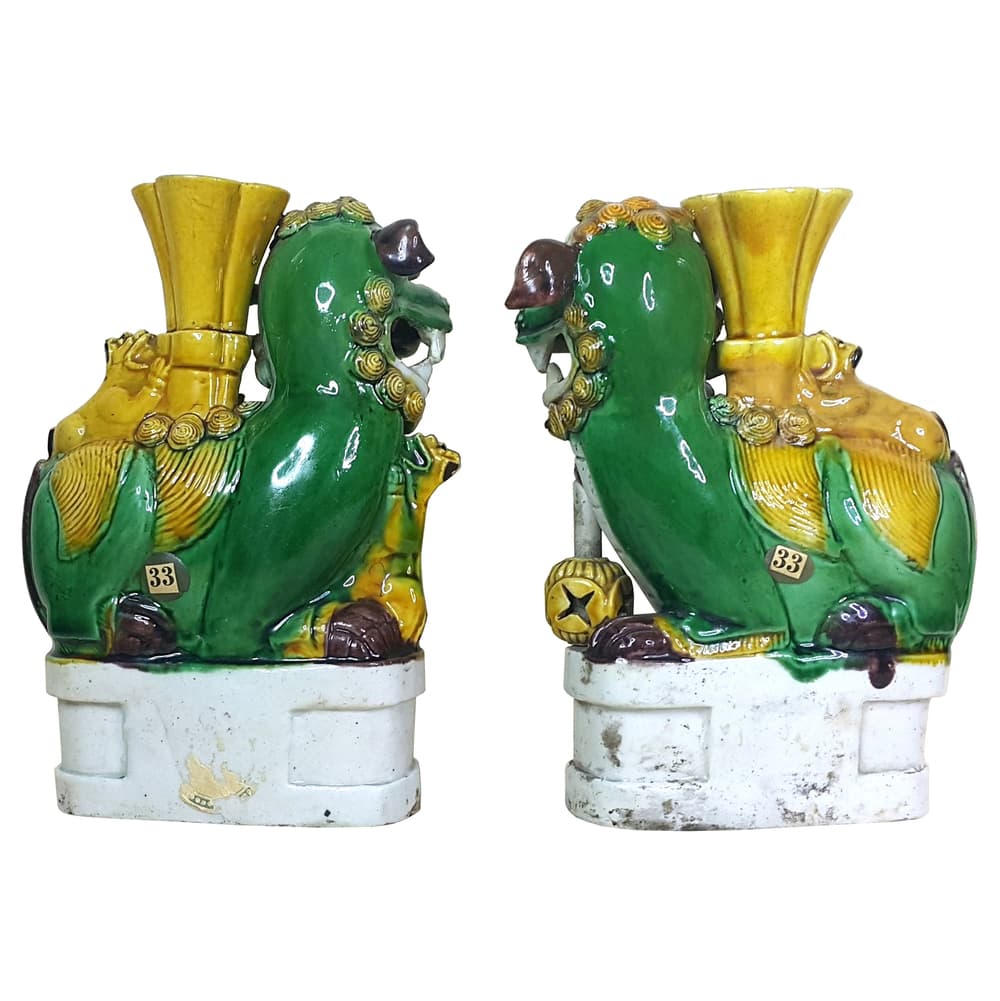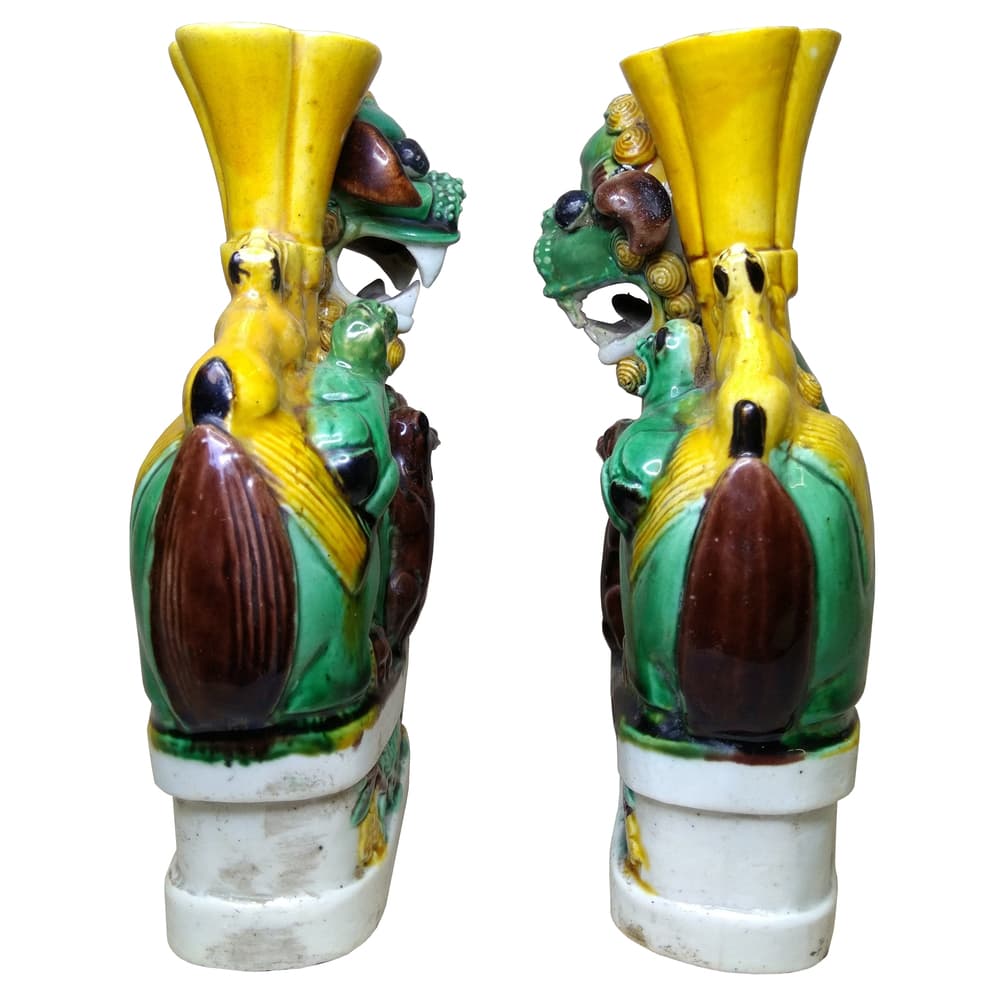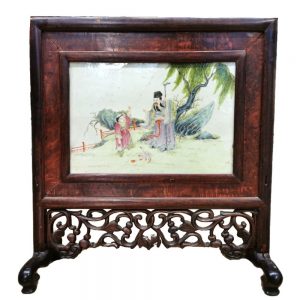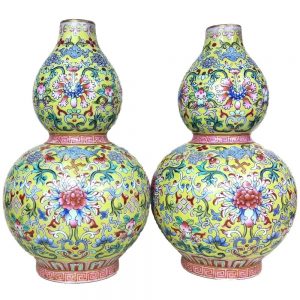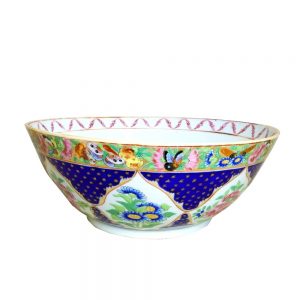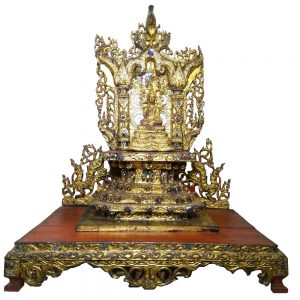Description
Antique Chinese porcelain figurine “Foo Dogs”, 18th-19th century.
Dimensions: 16.0 X 11.0 X 4.0 cm.
History of Foo dogs:
Foo dogs are actually lions. They originated in China, shi, meaning lion or shishi or stone lion. Yet they resemble the Chow Chow and Shih Tzu which led them to be called foo dogs (or fu dogs) in English.
Foo dogs were originally displayed outdoors. These Chinese guardian lions were found standing sentry in front of palaces, temples, and homes of the elite. They could be quite massive and imposing with their wide open mouths in midroar. It was much later that smaller more portable ones were produced.
Meant to be in pairs. Foo dogs are symbolic, protective statues – one is female and one is male. The female represents yin and symbolically protects the people dwelling in the home, while the male represents yang, protects the structure itself.
Each detail of the is symbolic. You can tell their gender by examining what’s beneath the paws. The male holds a ball, the female holds a puppy. The ball represents the world and the puppy represents nature or a nurturing spirit. If it has an open mouth and the other has closed one, this may represent the in-and-out breath, or the sound of “om.”
There is a right way and a wrong way to position the pair. When you’re facing a pair of foo dogs, the most auspicious placement according to feng shui is with the female on the left and the male on the right. And if you have a pair displaying them together rather than in different rooms is the way to go.
History Famille Verte:
Famille Verte, adopted in the Kangxi period around 1680, uses green , red, yellow, blue and aubergine in a few different shades and iron red with other overglaze colours. Black may also be used and occasionally gold.
Famille Verte wares were popular for several decades until the 1720s after the reign of Kangxi when it became supplanted by famille rose which has a greater colour range. It continued to be made in small amounts in the subsequent periods, and its popularity revived in the West in the late 19th and early 20th century.
Famille Jaune is a variation of famille verte, using famille verte enamels on a yellow ground.
Famille Noire is a variation of famille verte and wares were made in the Kangxi era. They may have a copper-green lead based enamel painted over dry black cobalt ground on the biscuit, and a transparent green glaze was then applied, giving it a near-iridescent appearance.
Antique Chinese porcelain figurine “Foo Dogs” – They are two exquisite and collectible items.
Code: C273



